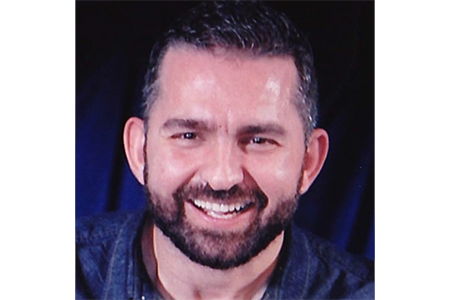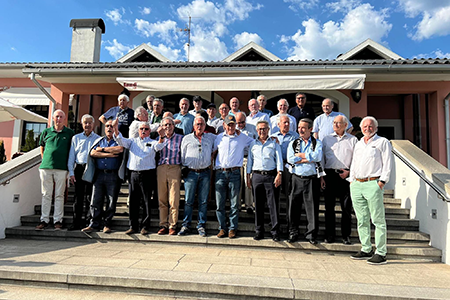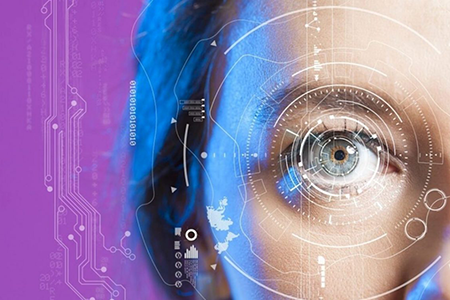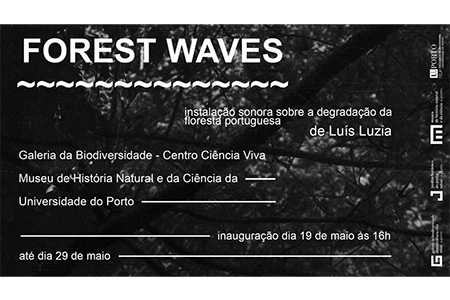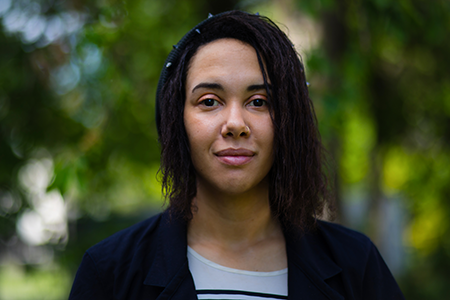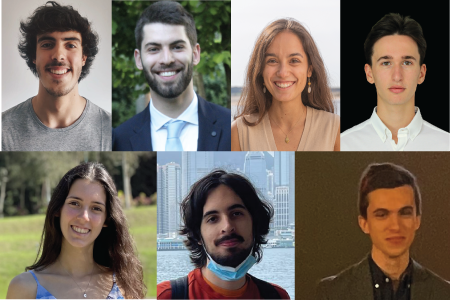Candidate:
Jorge Luís Pacheco Barcelos
Date, Time and place:
May 31,10:30, remotely with streaming at: https://www.youtube.com/channel/UCvsg2ymeaHLRLbsGt67JmKw
President of the jury:
PhD Jorge Manuel Pinho de Sousa, Full Professor at Faculdade de Engenharia of Universidade do Porto
Members:
PhD Paulo Nuno Vicente, Assistant Professor at Departamento de Ciências da Comunicação of Faculdade de Ciências Sociais e Humanas of Universidade Nova de Lisboa;
PhD Luís Francisco Mendes Gabriel Pedro, Assistant Professor at Departamento de Comunicação e Arte of Universidade de Aveiro;
PhD Maria da Conceição Gonçalves Costa, Associate Professor at Escola de Comunicação, Arquitetura, Artes e Tecnologias da Informação of Universidade Lusófona;
PhD José Manuel Pereira Azevedo, Associate Professor at Departamento de Ciências da Comunicação e da Informação of Faculdade de Letras of Universidade do Porto (Supervisor);
PhD António Fernando Vasconcelos Cunha Castro Coelho, Associate Professor at Departamento de Engenharia Informática of Faculdade de Engenharia of Universidade do Porto.
Abstract:
This thesis seeks to verify the degree of visual literacy that individuals in undergraduate and graduate studies at the Universities of Porto and Paraíba Federal, in the courses of design, multimedia, digital media, engineering, communication, have when interpreting an image. These interpretations present three important dimensions such as affective, compositional, and critical when analyzing an image, be it a painting, a photograph, a work of art, or an audiovisual piece, materialized in a verbal text. The theoretical framework of this research is given by reading a corpus of visual literacy such as Dondis (1974), Housen (1983), Braden and Bacca (1991), Arnheim (2001), Averignou and Pettersson (2011), Duchak (2014), Serafini (2014), Brumberger (2019), Kedra (2019), Supsakova (2020); and on image with Kress and Van Leeuwen (1996), Mirzoeff (1999), Cartwright & Sturken (2001), Villafañe (2006), and Mitchel (2009); and communication with Hall (2001), Berger (2000), Baylen&D’alba (2005), Horkenheimer & Adorno (2006), Santaella & Noth (2020), and in methodologies with Bloom (1956); Leung (2000); Amantes&Borges (2008), Hassan (2011), Biggs &Collins (2014), Rautiainen&Jappinen (2017), Arneson&Offerdahl (20018), Fernades (2019). This research has developed the Multimodal Assessment Method of Visual Literacy (MAMLV) that uses both quantitative and qualitative methodologies, with the qualitative aspect assisting in providing greater detail of the interpretive experience. The data collection instrument was a semi-structured interview that allows the interviewee to vent their interpretive thoughts, with minimal interference from the interviewer. These statements were collected and classified through the use of a coding manual that aids in classification. The statements were classified into categories of domains and subcategories, the topics. Depending on the number of statements, the individual belongs to a certain level of visual literacy. There are three levels of visual literacy, although the Multimodal Assessment Method of Visual Literacy (MAMLV) considers intermediate levels between each level. Thus, it can be observed that individuals despite being immersed in a visual world still present a low degree of visual literacy, as they do not have the skills and competencies fully developed to know the communicative interactions between the visual elements, their design principles and the visual grammar that are contained in an image. Although there are also individuals with a high degree of visual literacy. The findings suggest that this happens due to the lack of teaching curricula that contemplate visual and media literacy in the different levels of primary, secondary and university education, considering the curricular structures of the courses involved, and the results found, we can conclude that the inclusion of visual literacy in systematized teaching is of paramount importance for the formation of fully visually literate individuals.
Keywords: Visual Literacy; Image; Communication, Methodology
